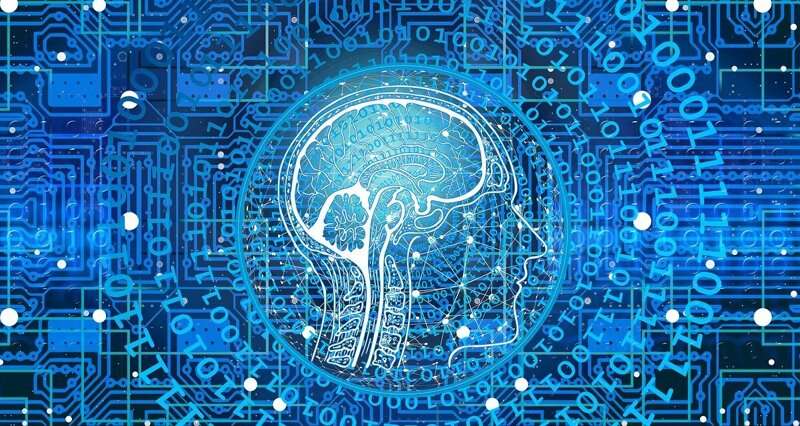Research consortium to scour the brain for causes of psychiatric illnesses

What happens in the brains of people with psychiatric illnesses? With a €23.23 million gravity grant, scientists from different fields will search for biological causes over the next decade. "By joining forces, we hope to improve diagnosis and treatment for patients with these diseases."
"We actually don't know much about the biological basis of these diseases yet," explains Leiden professor Mario Van der Stelt. "A psychiatrist now makes his diagnosis based on the patient's symptoms. But there is a lot of overlap between symptoms."
Van der Stelt acknowledges that a lot of research has been done on brain diseases such as Alzheimer's and Parkinson's disease. But much less on psychiatric diseases such as depression and anxiety disorders. "We are going to change that with this consortium."
That consortium is broad. Psychologists, psychiatrists, biologists, data scientists, chemists and biopharmacists from all over the Netherlands are working together on that particular question: what are the biological causes of psychiatric diseases such as depression or a personality disorder?
Brain atlas at the molecular level
The research is ambitious. The researchers will compile a "brain atlas." For 16 areas in the brain, they will map what goes wrong for each cell at the molecular level. To this end, they will examine brain tissue from donors with various neuropsychiatric diagnoses such as depression, Parkinson's disease, schizophrenia and fronto-temporal dementia. They relate this to the psychiatric symptoms of these illnesses.
Artificial intelligence (AI) plays a major role throughout the project. The researchers use it to analyze the huge amount of data they produce. That is why data scientists are involved.
The research starts with humans this time
"What makes this research so unique is that we are studying human brains from donors," says professor Sander van Kasteren. Traditionally, research takes place first in specially cultured cells, then in animal models and only later in humans.
Van der Stelt explains that you cannot work with animal models in this study. "You cannot ask an animal how it feels. From these donors we know exactly what symptoms they had and what drugs they were taking."
"The Netherlands Brain Bank has an extensive donor program in the field of neuropsychiatry," Van Kasteren continues. "That's the beauty of this collaboration. All those researchers fit together like puzzle pieces. We all want the same thing, each from the perspective of their own field. We already worked together with the Netherlands Brain Bank in a previous gravity project. The match with them and the other researchers is tremendously good."
Unique donor program of the Netherlands Brain Bank
Inge Huitinga confirms that. "This research project builds on many years of work by the Netherlands Brain Bank," she says proudly. Huitinga leads the consortium. She is director of the Netherlands Brain Bank and associate professor of Neuroimmunology at the University of Amsterdam.
"Ten years ago, we started a donation program specifically for these illnesses. And now we have enough, well-documented brain tissue available for research. That is unique worldwide."
The Leiden professors also beam when they talk about this research. "It's like running the marathon in hopscotch," says Van Kasteren. "The tools we normally use don't work now. We have to develop new chemical tools to study human brain tissue. This hugely challenges me as a researcher, this is completely new."
"I want to understand how the brain works," says Van der Stelt. "I already did when I was in secondary school. To understand it at the molecular level. That is still the common thread in my career."
"What you have with brains, I have with the immune system," Van Kasteren exclaims enthusiastically. "And the brain's immune system is one of the last things we know very little about."
We won't get there without collaboration and AI
Of course, there are also challenges. Van Kasteren mentions the amount of data the researchers will produce. "Making sense of that is a real challenge. Fortunately, we have good people for that. In Leiden alone, AI and data experts from three faculties are involved, in addition to experts from Groningen. From our Faculty, that's Gerard van Westen."
"For me, the challenge lies in getting all those people to work together," Van der Stelt continues. "That is why we have devised tandem research projects: in these, a chemist works together with a biologist. After all, we want to train researchers who are at home in both fields. Furthermore, we want to set up courses on Chemical Neuroscience within the Chemistry master's and we are going to organize workshops for Ph.D. candidates."
Helping patients as the main driving force
But in the end, the main motivation for both researchers is that they want to contribute to treatment for people with psychiatric diseases. Van der Stelt says, "These diseases cause patients a lot of misery and cost society a lot of money every year."
Van Kasteren concurs. "I think it is important that we use research money for diseases affecting young people." Both hope that in 10 years' time, more will be known about the causes of these diseases.
"It's quite remarkable to collaborate with all these different experts to look for answers. It would be great if we soon have a better understanding of the causes and symptoms and have discovered new possibilities for drugs," says Van Kasteren.
Provided by Leiden University